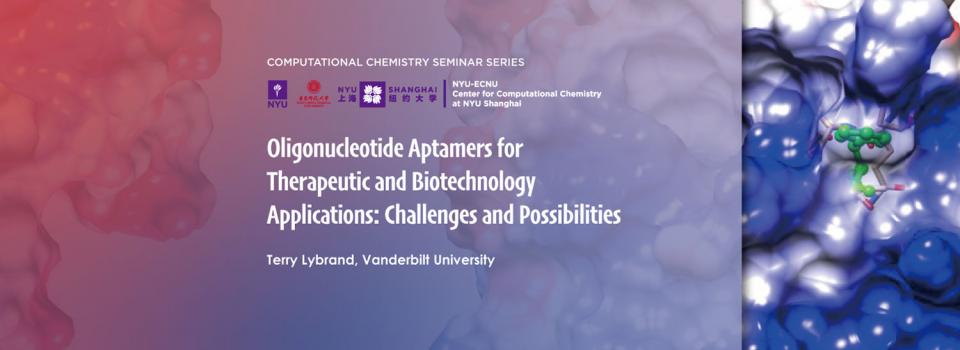
Abstract:
Aptamers are short peptide or oligonucleotide molecules that bind selectively to a target molecule, such as a protein or small organic molecule. RNA aptamers are particularly interesting, as there are standard techniques that allow development of RNA aptamers with exquisite target selectivity that rivals the best antibodies. Unfortunately, these RNA aptamers often exhibit weak binding affinity for their selective target, and small RNA molecules are also readily degraded and/or hydrolyzed under physiologic conditions. While there are a number of simple chemical modifications that can improve RNA aptamer chemical stability, there are no general strategies to enhance binding affinity. I will discuss a simple chemical modification, substitution of dithio-phosphate for a phosphate group in the nucleotide backbone that can, in some cases, increase target binding affinity by several orders of magnitude. I will propose a plausible explanation for this binding affinity enhancement, and present some examples where this simple chemical modification has produced RNA aptamers with promising therapeutic potential.
Biography:
Prof. Lybrand obtained his Ph.D. in pharmaceutical chemistry at the University of California, San Francisco, in 1984 with the late Prof. Peter A. Kollman (Dr. Lybrand was Prof. Kollman’s first graduate student at UCSF). He then pursued postdoctoral studies with Prof. J.A. McCammon at the University of Houston from 1985 until 1987, where he was awarded a Damon Runyon/Walter Winchell Cancer Fund Fellowship. He next moved to the University of Minnesota, where he was a Senior Fellow at the Minnesota Supercomputer Institute for three years. In 1990, he moved to the University of Washington as an assistant professor in the Department of Bioengineering, where he remained for over 10 years. During his early years as a junior faculty member, Prof. Lybrand was awarded a National Science Foundation Presidential Young Investigator Award, as well as a Searle Scholars Foundation/Chicago Community Trust Fellowship. In 1992, Prof. Lybrand was selected to present the University of Washington spring quarter Science in Medicine New Investigator lecture. In late 2000, he moved to Vanderbilt University as one of the founding faculty members in the Center for Structural Biology. Prof. Lybrand has been a visiting scientist at Centre Européen de Calcul Atomique et Moléculaire, Université de Paris-Sud; a visiting professor at the National University of Singapore, and a Wilsmore Fellow at the University of Melbourne. His research involves detailed computational and molecular modeling studies of proteinligand interactions and enzyme reaction mechanisms. His research group also develops software for molecular modeling and molecular graphics applications.
Bi-Weekly Seminar Series by the NYU-ECNU Center for Computational Chemistry at NYU Shanghai


